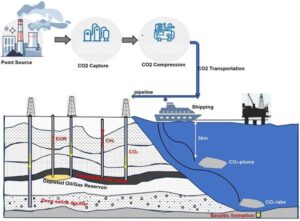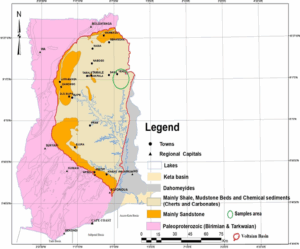By Christopher Nkansah, MSc
As the world pivots toward net-zero carbon emissions, carbon capture utilization and storage (CCUS) technologies have become pivotal solutions in combating climate change. Ghana, a burgeoning industrial economy in sub-Saharan Africa, stands at a crossroads in harnessing the potential of CCUS to reduce carbon emissions and footprints while fueling industrial growth. This article explores the technical, economic, and environmental aspects of CCS implementation in Ghana, supported by empirical data and analysis.

Ghana’s economic growth and industrial expansion have led to increasing energy demands and a corresponding rise in greenhouse gas emissions. As global climate change policies tighten, the development of carbon capture and storage (CCS) technology emerges as a strategic tool for reducing emissions while ensuring sustainable energy production. Among these strategies, the commercial storage of carbon dioxide (CO₂) presents a significant opportunity for Ghana to balance industrial growth with environmental responsibility.
Carbon capture and storage is increasingly recognized as essential for meeting the global climate targets set out in the Paris Agreement. By capturing CO₂ emissions from industrial sources and storing them underground, CCS can significantly reduce atmospheric carbon levels. Globally, over 40 million metric tons of CO₂ are stored annually, with countries like Norway and the United States leading the way.
The Prospects of CO₂ Storage in Ghana
Ghana’s unique geological formations present a significant opportunity for commercial CO₂ storage. The country is endowed with sedimentary basins, including the Tano Basin and the Voltaian Basin contain porous rock formations ideal for long term isolation and storage of CO₂. ₂. Preliminary studies by the Ghana Geological Survey Authority indicate these basins could store over 500 million metric tons of CO₂, making them viable long-term solutions. According to a 2021 study by the Petroleum Commission of Ghana, the estimated storage capacity of these basins exceeds 2 gigatons (Gt) of CO₂. Such capacity is sufficient to accommodate decades of emissions from industrial sectors, including power generation, cement production, and oil refining.











